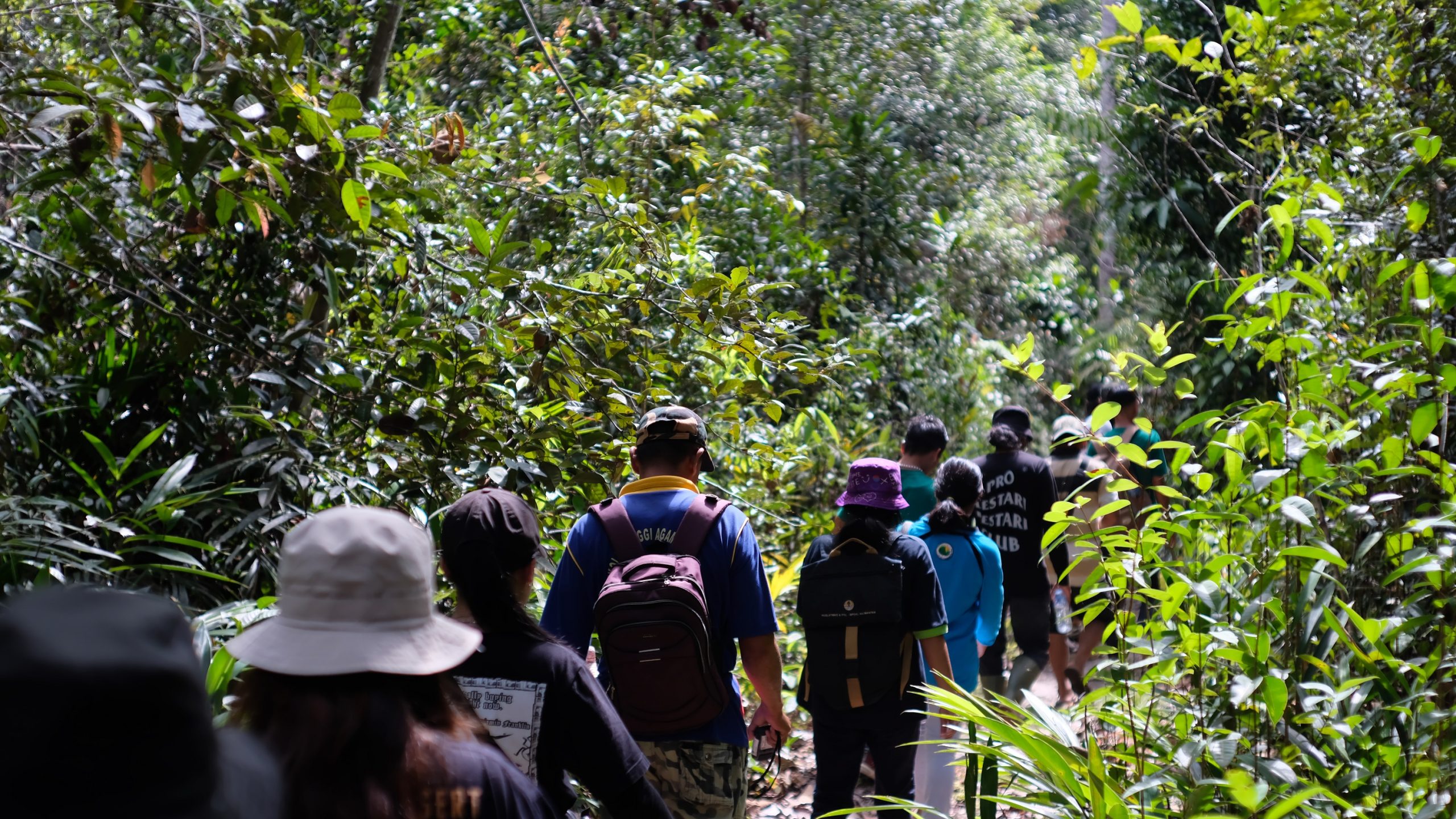At the end of September 2023, the long journey to the land of Cenderawasih (Papua Island) began. This trip was the author’s first experience setting foot on Papua Island. Not without reason, the author undertook this trip to carry out a Carbon Feasibility Study project in a forestry company on the north coast of Papua, Sarmi Regency.
After arriving at Sentani Airport, the author and team continued their journey using land transportation for 5 hours to arrive at Sarmi district. Sarmi Regency is a district in Papua Province, specifically in the northern part of Papua Province. Sarmi originates from an abbreviation of the names of the prominent tribes in this region, namely Sobei, Armati, Rumbuai, Manirem, and Isirawa. However, the number of large tribes in Sarmi is more than those mentioned above. In fact, the author has even met one large tribe that is not included in the 5 prominent tribes in Sarmi. This tribe is called Mahiabona.

Returning to the story, after arriving in Sarmi Regency, the author was immediately greeted warmly by the local community, one of which was Ondoafi, Rotea Village. For information, Ondoafi is a traditional leader in the village whose main task is to maintain and implement the law or customary order in the village area concerned. Apart from that, Ondoafi is also responsible and has the authority to manage the customary land of indigenous communities in the village. Usually, Ondoafi is chosen from men considered the strongest, bravest, and wisest, who know the customary provisions and are prioritized based on the lineage of the oldest descendants. Ondoafi, who welcomed us, was Titus Bweser. Mr. Titus talked about the condition of his village, starting by discussing the population, access to basic needs (education, water, and health), and the majority of the population’s livelihoods. The population in Rotea Village is dominated by native Papuan people. Indigenous Papuans still rely heavily on forests for hunting animals and harvesting wood to meet their daily needs. Uniquely, before carrying out hunting activities or taking wood in the forest, people must first ask Ondoafi for permission. People cannot hunt the animals or harvest the wood if prohibited. Farming activities are subsistence by the community, only to meet their daily needs.

The next day, the journey on the north coast of Papua was even more interesting because we met a tribe who were soldiers during the tribal war in Papua. Why is it called a warrior tribe? This tribe is not a native tribe in the Bonggo area, where we live in Sarmi, but comes from Tokra (current name is Sawar). This warrior tribe is called the Mawes tribe. Based on a story from Michael Saleh (Head of Mawes Wares Village), initially, the Mawes tribe helped the Ansudu tribe, which is an indigenous tribe, to fight the Takar and Tarontha tribes. The result was that the Ansudu tribe, with the help of the Mawes tribe, won over the Takar and Tarontha tribes. So, as a form of gratitude, the Ansudu tribe gifted their tribal land for the Mawes tribe to live in until now. The place where the Mawes tribe lived became known as Maweswares village. As additional information, in Papua, certain tribes have rights to all land and waters. This right is called “ulayat rights”. So, only some people can use it as they please. Still, it requires communication and permission from the indigenous tribal community there.

In the afternoon, we met the Ondoafi of the Vedan Tribe, namely Mr. John K Bitbit. This tribe lives in Podena Village. Initially, this tribe came from the Podena Island. Still, during the Dutch occupation, the people were asked to move to the mainland. The Vedan tribe is included in the large Sobey tribe. The Sobey tribe is known as an accomplished seafaring tribe. Apart from going to sea, the Sobey tribe, especially the Vedan tribe, is very concerned about preserving their culture. Together with the community and young people, they created an art and language preservation studio amidst modernization. When the author visited Mr. John’s house, he saw various handicrafts ranging from carvings, weaving, and paintings, and even the Vedan tribe processed their fish catch into another form (shredded meat), which had a high selling value. This floss is made from mackerel fish. Their crafts are exhibited at national exhibitions and by Modena Village tourists.



On the sidelines of the Feasibility Study activities, the author and teams enjoyed the natural beauty of Papua, which they couldn’t get on the busy Java Island. Starting from the north coast of Papua, Lake Sentani, to Kali Biru. The natural beauty of Papua cannot be described in words. Not only nature but rich culture with various languages is a characteristic of the island of Papua. This is the main reason why this experience will definitely not be forgotten.
There is still a lot that could be said. Still, the author feels that his experience in Papua during the Feasibility Study activity would be very long if written in this article. Other experiences gained in Papua will be told in other articles. Thank you and goodbye



